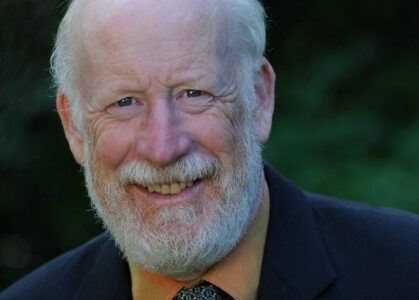Shed a little light on me
Introducing a new column for The Nelson Daily: Greening Up – What can I do?
Michael Jessen has been following energy issues since the 1973 oil crisis. He has authored more than 700 newspaper and online articles about sustainable lifestyles, waste reduction, and climate change.
Currently, Jessen is an efficiency and renewable energy advisor and operates Zero Waste Solutions, a consultancy specializing in aiding companies, communities, and individuals in the sustainable use of resources.
He has recently completed a white paper on the opportunities to shift capital investment from fossil fuels to energy efficiency and renewables. Here is his first installment …
By Michael Jessen
David Bracewell knows a lot about books; light bulbs, not so much.
In fact, Bracewell is somewhat in the dark about which bulbs to use in lighting his Victoria Street bookstore in Nelson.
During a recent visit to the Booksmyth store, I found Bracewell replacing one of his halogen light bulbs. He mentioned the heat the bulbs gave off and how quickly they wore out. He asked me for some advice, saying he was tired of paying out $20 per month for new bulbs.
Halogen bulbs are much like incandescent light bulbs – most of the energy they use is given off in heat instead of light, 90 per cent heat in the case of the incandescent. They each have a filament which tends to break down after a short period of use.
Compact fluorescent bulbs are the darling of the moment because they both last longer (between 6,000 and 15,000 hours, compared to 1,000 hours or so for incandescent bulbs) and use between 60 and 80 percent less electricity. They do contain a tiny amount of mercury and that turns many people off.
There is a better choice for both Bracewell and those opposed to fluorescents. Light emitting diodes (LED) are a newer type of light bulb that conserves even more energy.
LED bulbs can operate for 30,000 hours or more. One LED light bulb can easily outlast 30 incandescent bulbs or six compact fluorescent bulbs. LED bulbs cost less than the bulbs they replace over their lifetime. When operating 12 hours per day, LED bulbs can last seven years or more.
Unlike incandescent bulbs, they are not sensitive to shock, vibration, or the extreme temperature changes. And, unlike compact fluorescent bulbs which can wear out faster if they are frequently turned on (they should be left on for at least 10 minutes) and off, LED bulbs are not affected by frequent on-off switching.
Twenty per cent of the world’s electricity is used for lighting so it makes sense to use the most efficient bulb possible. If you haven’t switched your incandescent bulbs to compact fluorescent or LEDs, remember the incandescent will be phased out in Canada in 2012.
A recent United Nations study estimated there were still 93,000,000 incandescent bulbs in use in 2009 in Canada. Switching all of them to energy efficient bulbs would cost about $519 million, but the cost would be saved in one year through reduced consumption of 5,300,000 megawatt hours of electricity.
Find out more at http://lightbulbs.org/, http://www.creeledlighting.com/, and http://www.sylvania.com/.
FortisBC has a PowerSense web page just for small businesses at http://www.fortisbc.com/powersense/small_business.html.
Lastly, light your life with a climate-friendly choice – be sure the bulb you buy has the ENERGY STAR® label.

























Comments